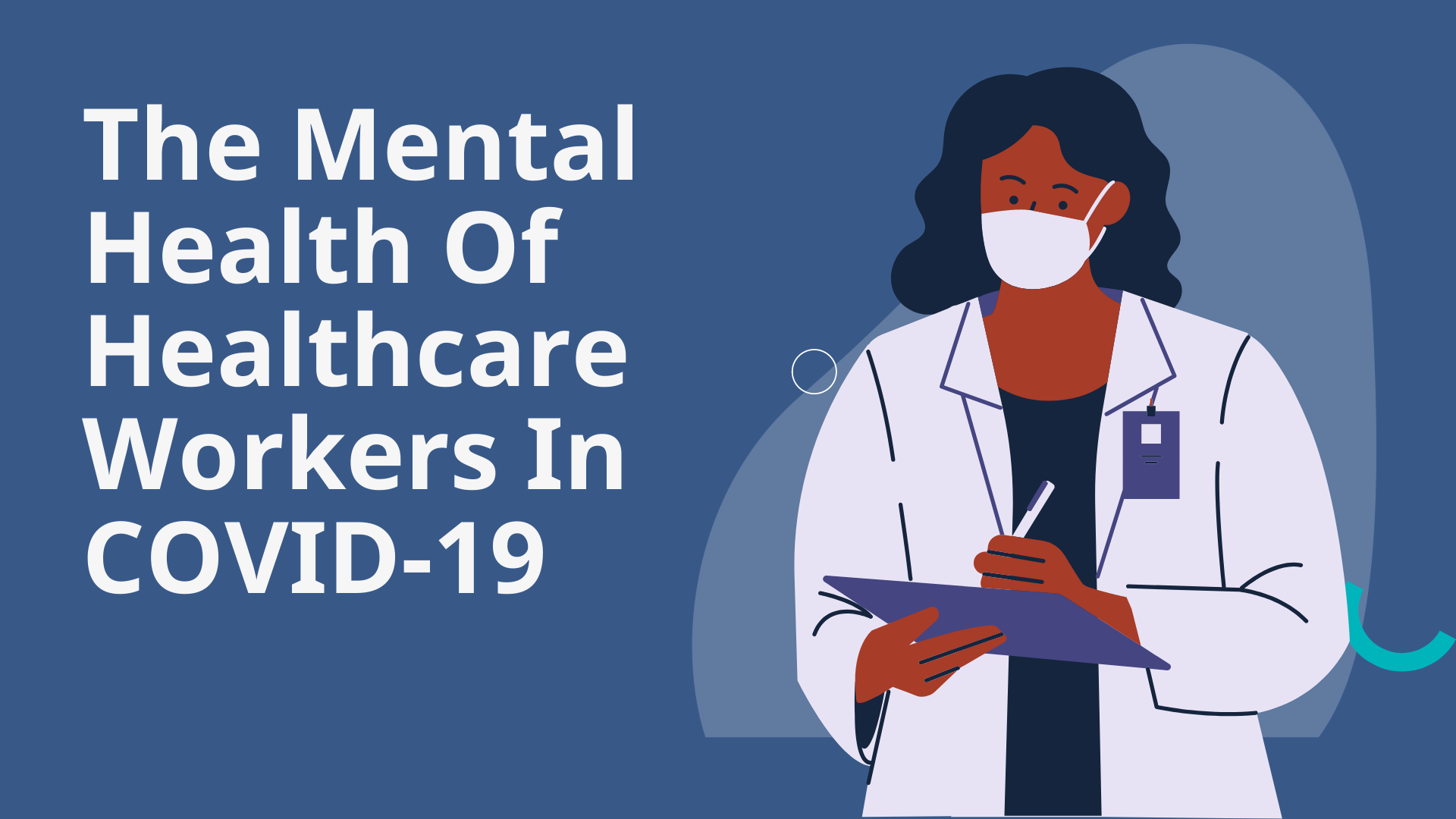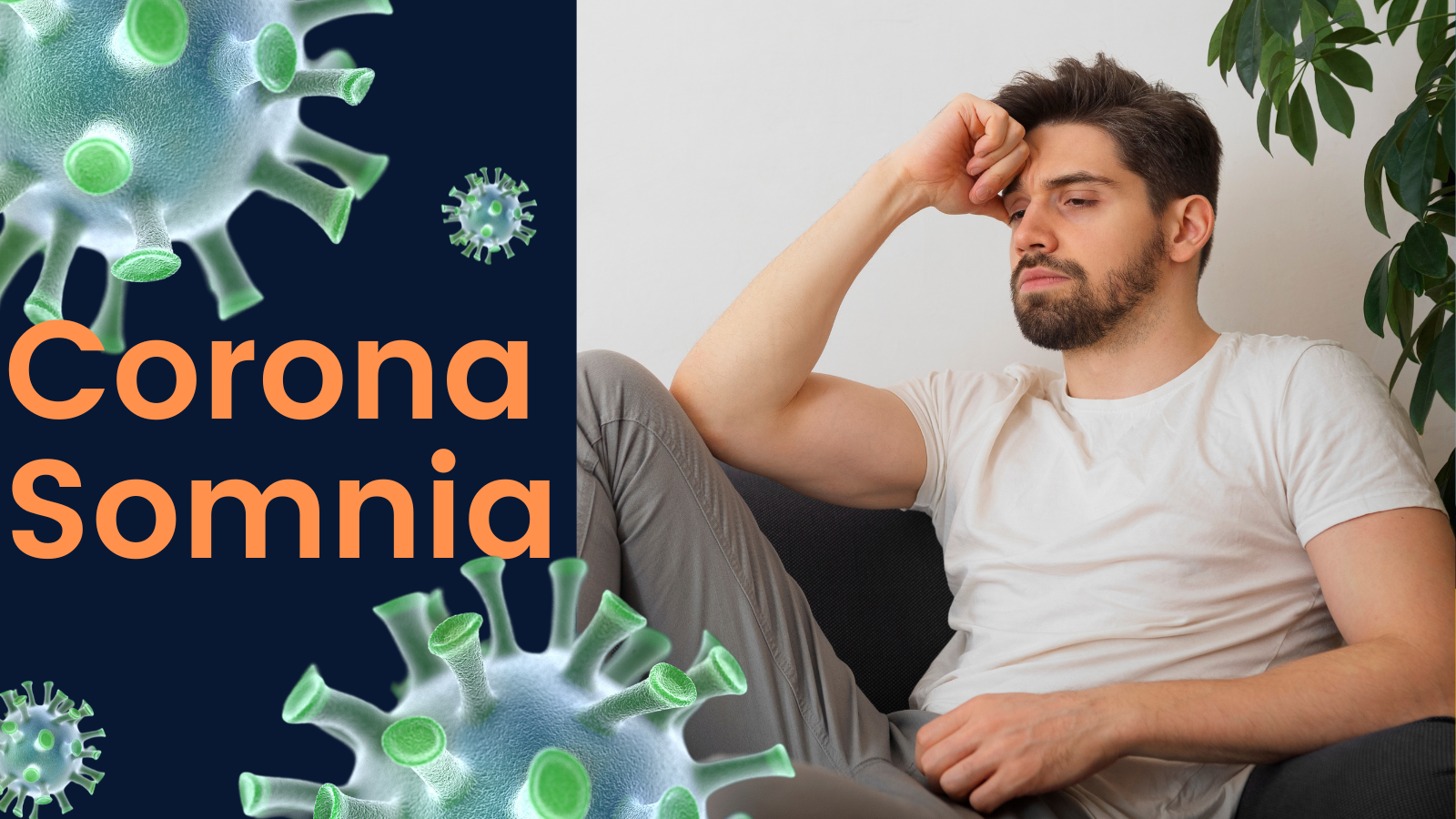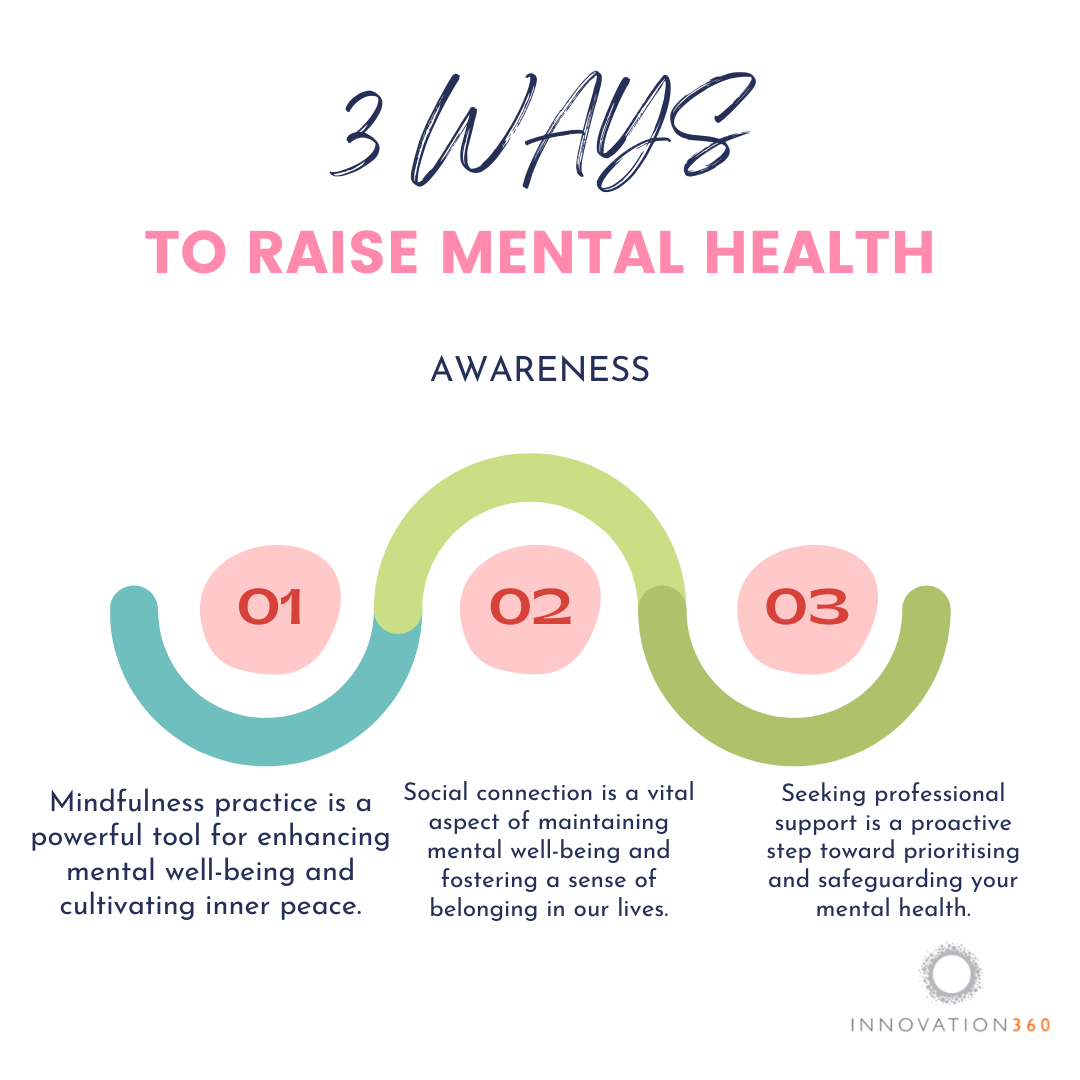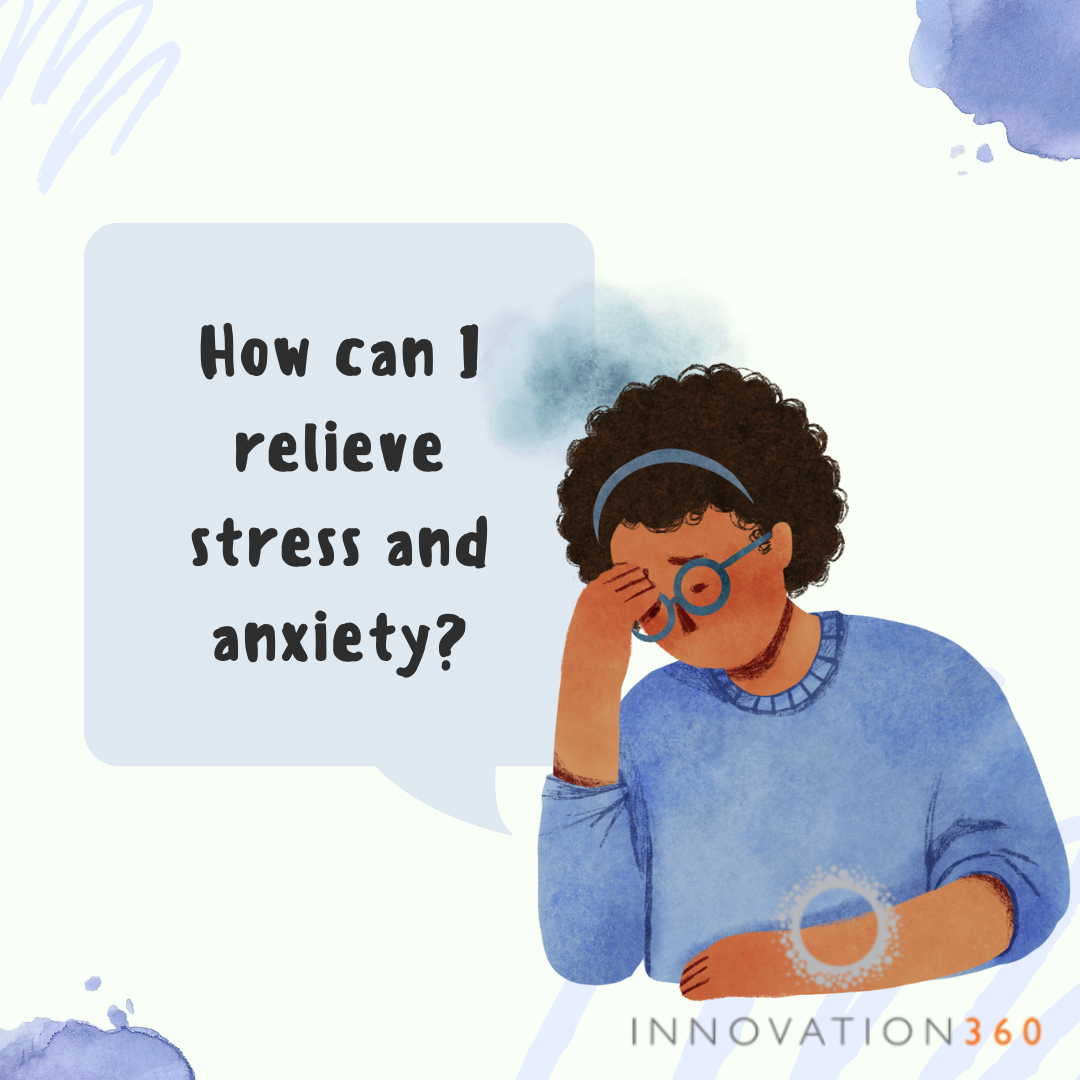Overcoming the Stigma of Psychiatric Medication
Introduction
The stigma surrounding psychiatric medication is a pervasive issue that often goes unnoticed, yet its consequences are profound.
In a society where mental health struggles are still stigmatized, individuals prescribed psychiatric medication often find themselves facing judgment, discrimination, and societal pressure to “suffer in silence.” The stigma surrounding psychiatric medication arises from misconceptions about mental illness and treatment.
Lack of awareness perpetuates these stigmas, fostering shame and secrecy. Consequently, individuals may delay or avoid seeking treatment, fearing being labeled as “mentally ill” or “dependent on medication.”

“Addressing the pervasive stigma surrounding psychiatric medication.”
The Burden of Stigma
Stigma surrounding psychiatric medication stems from deeply ingrained misconceptions and stereotypes about mental illness and treatment. Society’s lack of awareness and education on mental health issues perpetuates these stigmas, leading to a culture of shame and secrecy surrounding psychiatric medication usage. As a result, individuals who could benefit from treatment often delay or avoid seeking help altogether, fearing the repercussions of being labeled as “mentally ill” or “dependent on medication.”
Consequences of Silence
The reluctance to discuss mental health struggles and medication usage leads to significant consequences for individuals and society as a whole. Without proper .Addressing the pervasive stigma surrounding psychiatric medication.”, individuals may experience worsening symptoms, decreased quality of life, and even life-threatening situations. The silence surrounding psychiatric medication also reinforces the misconception that mental illness is a personal weakness rather than a legitimate medical condition, further perpetuating stigma and hindering progress towards destigmatization.

“Consequences of silence: The impact of stigma on mental health and treatment.”
Barriers to Treatment
Stigma creates barriers to accessing mental health care and treatment, particularly for marginalized communities. Discrimination based on mental health status can result in individuals being denied employment, housing, or healthcare services. Moreover, the fear of judgment from friends, family, or healthcare providers may prevent individuals from seeking help when they need it most, exacerbating their suffering and perpetuating cycles of untreated mental illness.
Changing the Narrative
It’s crucial to challenge the narrative surrounding psychiatric medication and mental health treatment. Instead of viewing medication as a crutch or a sign of weakness, we must recognize it as a legitimate and effective tool for managing mental illness. Education plays a vital role in dispelling myths and misconceptions about psychiatric medication, empowering individuals to make informed decisions about their mental health care without fear of judgment or shame.

“Breaking down barriers: Addressing stigma in mental health treatment.”
Empowering Individuals to Speak Up
Creating a supportive and inclusive environment where individuals feel comfortable discussing their mental health struggles and treatment experiences is essential. By empowering individuals to speak up and share their stories, we can break down barriers and foster a culture of acceptance and understanding. Peer support groups, advocacy organizations, and mental health campaigns all play a crucial role in amplifying voices and challenging stigma.
Promoting Compassionate Care
Healthcare providers also have a responsibility to combat stigma and provide compassionate care to individuals seeking mental health treatment. This involves actively listening to patients, validating their experiences, and offering nonjudgmental support and guidance. Treating mental illness with compassion and respect reduces stigma.It encourages more individuals to seek help.
Healthcare providers play a crucial role in this effort.

“Empowering individuals to speak up and promoting compassionate care in mental health.”
Conclusion
The stigma surrounding psychiatric medication serves as a barrier to mental health treatment.
It perpetuates suffering and silence among those in need.
It’s time to challenge outdated beliefs and stereotypes about mental illness and medication usage.
We must foster a culture of acceptance, understanding, and support.
By amplifying voices, promoting education, and advocating for compassionate care.
We can break down barriers and create a more inclusive and supportive society for all.
Frontline Mental Health: Avoiding Burnout
How Frontline Workers Can Take Care of Their Mental Health, Avoid Burnout
Introduction:
Frontline workers face unique challenges that can impact their mental health. In this comprehensive guide, we delve into practical strategies for maintaining mental well-being, avoiding burnout, and thriving in demanding roles. From self-care techniques to fostering resilience, this article equips frontline heroes with the tools they need to prioritize their mental health.

Frontline workers discussing mental health strategies during a team meeting.
Strategies for Self-Care and Resilience
Recognizing Stressors and Triggers
Frontline workers often encounter high-stress situations. It’s crucial to identify stressors and triggers to effectively manage them. By translating these insights into behaviors, individuals can develop coping mechanisms and seek support when needed.
Practicing Mindfulness and Relaxation Techniques
Mindfulness and relaxation techniques are powerful tools for managing stress. Techniques such as deep breathing exercises, meditation, and yoga can help frontline workers cultivate a sense of calm amidst chaos.
Setting Boundaries
Setting boundaries is essential for maintaining work-life balance. Frontline workers must establish clear boundaries between work responsibilities and personal time to prevent burnout. Learning to say no when necessary and prioritizing self-care are key aspects of boundary setting.
Seeking Social Support
Building a strong support network is vital for frontline workers. Whether it’s connecting with colleagues, friends, or family members, having a support system in place can provide emotional validation and encouragement during challenging times.
Engaging in Physical Activity
Regular exercise is not only beneficial for physical health but also plays a crucial role in managing stress and improving mood. Frontline workers should prioritize physical activity as part of their self-care routine, even if it means incorporating short bursts of exercise into busy schedules.
Practicing Gratitude
Cultivating a mindset of gratitude can significantly impact mental well-being. Frontline workers can benefit from regularly reflecting on what they’re thankful for, even amidst difficult circumstances. Expressing gratitude can foster resilience and perspective.
Embracing Creativity and Hobbies
Engaging in creative pursuits and hobbies can serve as a therapeutic outlet for frontline workers. Whether it’s painting, writing, gardening, or playing music, finding activities that bring joy and relaxation is essential for mental health.
Prioritizing Sleep
Quality sleep is essential for cognitive function, emotional regulation, and overall well-being. Frontline workers should prioritize adequate rest by establishing a consistent sleep schedule, creating a relaxing bedtime routine, and optimizing their sleep environment.
Balancing Workload and Responsibilities
Finding balance in workload and responsibilities is crucial for preventing burnout. Frontline workers should prioritize tasks, delegate when possible, and communicate openly with supervisors about workload concerns.
Staying Informed Without Overwhelm
While staying informed is important, constant exposure to negative news can take a toll on mental health. Frontline workers should limit their media consumption, seek reputable sources, and take breaks from news updates to prevent information overload.
Fostering Resilience
Resilience is the ability to bounce back from adversity stronger than before. Frontline workers can cultivate resilience by reframing challenges as opportunities for growth, maintaining a positive outlook, and adapting to change with flexibility and optimism.
TEMPLE, Texas — Medical professionals have been on the front lines to fight COVID-19 for almost a year. According to multiple studies, it has taken a toll on people’s mental health. In this week’s “Your Best Life,” 6 News Anchor Leslie Draffin spoke with a Dallas-based clinical psychologist about how to combat burnout and stress, especially if you’re a frontline worker.

A frontline worker practicing mindfulness and relaxation techniques during a break.
The Toll on Frontline Workers’ Mental Health
- Stress: A mental health survey of healthcare workers reveals staggering statistics, with 93% reporting stress.
- Anxiety: 86% of frontline workers are experiencing anxiety, contributing to the overall burden on mental well-being.
- Frustration: 77% of healthcare workers report feelings of frustration, highlighting the challenges they face in their roles.
- Exhaustion and Burnout: 76% of frontline workers are experiencing exhaustion and burnout, underscoring the toll of prolonged exposure to traumatic experiences.
- Overwhelm: 75% of healthcare workers feel overwhelmed by the demands of their work, further exacerbating their mental health struggles.
FAQs
How can frontline workers manage stress on the job?
Frontline workers can manage stress by practicing mindfulness, setting boundaries, seeking social support, and engaging in self-care activities.
What are some effective relaxation techniques for frontline workers?
Effective relaxation techniques for frontline workers include deep breathing exercises, meditation, progressive muscle relaxation, and guided imagery.
How important is it for frontline workers to prioritize self-care?
Prioritizing self-care is crucial for frontline workers to maintain their mental health, prevent burnout, and sustain their ability to provide quality care to others.
What role does social support play in the mental health of frontline workers?
Social support plays a significant role in the mental health of frontline workers by providing emotional validation, encouragement, and a sense of belonging during challenging times.
How can frontline workers foster resilience in the face of adversity?
Frontline workers can foster resilience by reframing challenges as opportunities for growth, maintaining a positive outlook, and adapting to change with flexibility and optimism.
What are some signs of burnout that frontline workers should be aware of?
Signs of burnout in frontline workers may include feelings of exhaustion, cynicism or detachment from work, and reduced effectiveness in job performance.
“We’re not usually part of the story,” said Dr. Kevin Gilliland, a Dallas-based clinical psychologist. “There are times in our life that we’re going through something similar to our patients. But now, everybody that comes in, we’re all part of the same stories. We’re all wrestling with some of the same issues and so that really starts to take a toll on us because those are the conversations that we have every day at work, and then we go home and have the same conversation so it’s like we don’t get away from it.”
Dr. Gilliland has helped clients battle burnout during thexd He said, “It’s always physical and it’s always psychological. It doesn’t matter what you do for a living. The symptoms look the same.”
Watch the video.
Mental Health Daily Checklist
Optimize Your Mental Health with a Comprehensive Checklist
Welcome to a journey toward better mental health! a comprehensive checklist designed to optimize your mental well-being.
By following this checklist, you will be equipped with valuable tools and strategies to enhance your overall mental health and cultivate a greater sense of well-being.
Understanding Mental Health
Improving mental health starts with understanding its components. It includes emotional, psychological, and social well-being.It impacts how you think, feel, and act, influencing every aspect of your life.
The Mental Health Checklist

Caring for your mental health is a daily commitment. Here’s a checklist to guide you in prioritizing self-care every day.
Now, let’s explore the comprehensive checklist designed to optimize your mental health. Each item on this list is carefully crafted to address different facets of well-being, providing you with a holistic approach to mental health maintenance.
| Checklist Item | Description |
| Identify Stress Triggers | Recognize the factors that contribute to your stress levels, whether they’re work-related, personal, or environmental. |
| Practice Mindfulness | Cultivate present-moment awareness through mindfulness techniques such as meditation, deep breathing, and body scans. |
| Nurture Supportive Relationships | Surround yourself with positive, nurturing relationships that provide emotional support and encouragement. |
| Prioritize Self-Care | Dedicate time to activities that rejuvenate and replenish your mind, body, and spirit, such as exercise, hobbies, and relaxation techniques. |
| Set Realistic Goals | Establish achievable goals that align with your values and aspirations, fostering a sense of purpose and motivation. |
| Maintain a Healthy Lifestyle | Embrace habits that promote physical health, including nutritious eating, regular exercise, and sufficient sleep. |
| Seek Professional Help | Don’t hesitate to reach out to mental health professionals if you’re struggling to cope or experiencing persistent symptoms. |
| Practice Gratitude | Cultivate an attitude of gratitude by reflecting on the things you’re thankful for, fostering positivity and resilience. |
| Establish Boundaries | Set clear boundaries to protect your mental and emotional well-being, ensuring that you prioritize self-care and avoid burnout. |
| Engage in Leisure Activities | Make time for activities that bring you joy and fulfillment, whether it’s pursuing a hobby, spending time outdoors, or exploring new interests. |
| Develop Coping Strategies | Equip yourself with effective coping mechanisms to manage stress and adversity, such as problem-solving skills and relaxation techniques. |
| Monitor Your Thoughts | Pay attention to your thought patterns and challenge negative or distorted thinking, replacing it with more balanced and rational perspectives. |
| Practice Self-Compassion | Treat yourself with kindness and understanding, acknowledging your imperfections and embracing self-compassion. |
| Foster a Sense of Belonging | Cultivate connections with your community or social groups, fostering a sense of belonging and camaraderie. |
| Embrace Learning and Growth | View challenges as opportunities for growth and learning, adopting a growth mindset that values resilience and perseverance. |
Navigating Your Mental Health Journey
Embarking on the path to improved mental health requires dedication, perseverance, and self-compassion. By incorporating the strategies outlined in this checklist into your daily life, you’ll gradually cultivate greater resilience, well-being, and fulfillment.
Seeking Professional Guidance
While this checklist provides valuable tools for self-care and well-being, it’s essential to recognize when professional support is needed. If you’re struggling with persistent symptoms or finding it challenging to cope, don’t hesitate to reach out to a qualified mental health professional for guidance and support.
Mental Health Checklist FAQs
What is the importance of a mental health checklist?
A mental health checklist serves as a comprehensive guide for optimizing your mental well-being. It provides structured guidance and actionable strategies for cultivating resilience, managing stress, and enhancing overall well-being.
How often should I refer to the mental health checklist?
It’s beneficial to incorporate the items on the mental health checklist into your daily routine. Consistency is key to reaping the long-term benefits of these practices, so aim to integrate them into your daily life as much as possible.
Can I customize the mental health checklist to suit my individual needs?
Absolutely! The mental health checklist is designed to be adaptable to individual preferences and circumstances. Feel free to tailor the strategies and activities to align with your unique needs and preferences.
What should I do if I’m struggling to implement items on the checklist?
If you encounter challenges or resistance while implementing items on the checklist, don’t be discouraged. Start with small, manageable steps and gradually build upon your efforts over time. Additionally, don’t hesitate to seek support from friends, family, or mental health professionals if needed.
Is it normal to experience setbacks on my mental health journey?
Yes, setbacks are a natural part of the mental health journey. It’s important to approach setbacks with self-compassion and resilience, recognizing them as opportunities for growth and learning rather than failures.
How can I track my progress with the mental health checklist?
Consider keeping a journal or utilizing digital tools to track your progress with the mental health checklist. Reflect on your experiences, challenges, and successes regularly to maintain awareness of your mental health journey.
Conclusion
In conclusion, prioritizing your mental health is essential for overall well-being and quality of life. By incorporating the strategies outlined in this checklist into your daily routine, you will empower yourself to navigate life’s challenges with resilience, optimism, and self-care.
Remember, your mental health matters, and you deserve to prioritize self-care and well-being. Start your journey toward optimized mental health today by embracing the power of this comprehensive checklist.
Quarantine can be tough on your mental and physical health. Dr. Kevin Gilliland joined us with a mental health checklist you can run through to keep yourself healthy and happy during these times.
Watch the video here.
The Coronasomnia Effect Sleep Disorders
Definition, Symptoms, and Solutions
The Coronasomnia Effect Sleep Disorders , The COVID-19 pandemic has led to significant disruptions in various aspects of daily life. One such area profoundly affected is sleep. With the stress and uncertainty brought about by the pandemic, many individuals are experiencing difficulties with sleep, leading to the emergence of what experts are terming “Coronasomnia.”
Introduction to Coronasomnia
The Coronasomnia Effect Sleep Disorders experienced by individuals during the COVID-19 pandemic. It encompasses a range of sleep disorders, including insomnia, sleep apnea, and restless leg syndrome, among others. The term has gained traction as more people report difficulties falling asleep or staying asleep amidst the challenges posed by the pandemic.

Struggling to sleep amidst the pandemic? Learn about Coronasomnia and how to manage it effectively.
has summarized these stressors into the mnemonic device “FED UP”:
Financial stress
Emotional stress
Distance from others
Unpredictability
Professional concerns
Understanding The Coronasomnia Effect Sleep Disorders
Insomnia
Insomnia is perhaps the most prevalent sleep disorder associated with Coronasomnia. Individuals with insomnia struggle to fall asleep or stay asleep, leading to feelings of fatigue, irritability, and difficulty concentrating during the day.
Sleep Apnea
Sleep apnea is another common sleep disorder characterized by pauses in breathing during sleep. These interruptions can lead to fragmented sleep and contribute to feelings of unrest upon waking.
Impact of the Pandemic on Sleep
The pandemic has introduced numerous stressors into people’s lives, ranging from concerns about health and safety to financial worries and social isolation. These stressors can significantly impact sleep quality, leading to an increase in sleep disorders among the population.
Factors Contributing to Coronasomnia
Stress and Anxiety
The uncertainty surrounding the pandemic has heightened levels of stress and anxiety for many individuals. Persistent worries about contracting the virus, job security, or the well-being of loved ones can manifest as sleep disturbances.
Changes in Routine
With lockdowns and social distancing measures in place, many people have experienced disruptions to their daily routines. Working from home, homeschooling children, or dealing with other changes in lifestyle can disrupt sleep patterns and contribute to Coronasomnia.
Increased Screen Time
The pandemic has also led to a surge in screen time, whether for work, entertainment, or staying connected with others virtually. Excessive exposure to screens, particularly before bedtime, can interfere with the body’s natural sleep-wake cycle and exacerbate sleep problems.
Symptoms of Coronasomnia
It’s essential to recognize the signs of Coronasomnia early on to address them effectively. Common symptoms include difficulty falling asleep, frequent waking during the night, daytime fatigue, irritability, and difficulty concentrating.
Tips for Managing Coronasomnia
Establishing a Consistent Sleep Schedule
Maintaining a regular sleep schedule, even on weekends, can help regulate the body’s internal clock and improve sleep quality.
Limiting Screen Time Before Bed
Reducing exposure to screens, such as smartphones, tablets, and computers, at least an hour before bedtime can promote better sleep by minimizing the disruptive effects of blue light.
Creating a Relaxing Bedtime Routine
Engaging in calming activities before bed, such as reading, taking a warm bath, or practicing relaxation techniques like deep breathing or meditation, can signal to the body that it’s time to wind down and prepare for sleep.
Practicing Stress-Relief Techniques
Finding healthy ways to manage stress, such as exercise, journaling, or talking to a trusted friend or therapist, can alleviate anxiety and promote better sleep.
Seeking Professional Help
If sleep disturbances persist despite self-help strategies, it’s essential to seek professional help from a healthcare provider or sleep specialist. They can evaluate underlying causes of sleep problems and recommend appropriate treatment options.
The Importance of Addressing Coronasomnia
Addressing Coronasomnia is crucial not only for improving sleep quality but also for maintaining overall health and well-being. Chronic sleep disturbances can increase the risk of various health conditions, including cardiovascular disease, obesity, and mental health disorders.
Conclusion
In conclusion, Coronasomnia represents a significant challenge for many individuals amidst the COVID-19 pandemic. By understanding the factors contributing to sleep disturbances and implementing effective strategies for managing them, it’s possible to mitigate the impact of Coronasomnia and promote better sleep and overall health.
FAQs
- Is Coronasomnia a temporary or long-term condition? Coronasomnia can vary in duration depending on individual circumstances. While some may experience temporary sleep disturbances, others may struggle with long-term insomnia or other sleep disorders.
- Can Coronasomnia affect children and adolescents? Yes, children and adolescents can also experience Coronasomnia due to the stress and disruptions caused by the pandemic on their routines and daily lives.
- Are there any natural remedies for managing Coronasomnia? Several natural remedies, such as herbal teas, relaxation techniques, and mindfulness practices, may help alleviate symptoms of Coronasomnia. However, it’s essential to consult with a healthcare professional before trying any new remedies.
- How does Coronasomnia impact mental health? Coronasomnia can exacerbate existing mental health conditions or contribute to the development of new ones, such as anxiety and depression, due to the interplay between sleep and mental well-being.
- When should I seek professional help for Coronasomnia? If sleep disturbances persist for an extended period or significantly impair daily functioning, it’s advisable to consult with a healthcare provider or sleep specialist for a comprehensive evaluation and appropriate treatment recommendations.
Dr. Kevin Gilliland, clinical psychologist and Executive Director at Innovation360, joined Wake Up With Cheddar to break down the spike in insomnia occurring all over the world due to uncertainty from the COVID-19 pandemic. Dr. Gilliland discusses the mental and physical consequences of a lack of sleep, and gives tips for how we can put ourselves in the best position to get a good night’s rest.
Three Essential Tools to Maintain Mental and Physical Well being
Introduction:
In today’s fast-paced world, maintaining mental and physical health is paramount for a fulfilling life. With the right tools and strategies, achieving a balanced lifestyle becomes more attainable than ever. In this comprehensive guide, we will explore three indispensable tools that can significantly contribute to your overall well-being.

Three essential tools for maintaining mental and physical well-being
Mindfulness Meditation: A Path to Inner Peace
Amidst the chaos of daily life, finding moments of tranquility can be challenging. However, practicing mindfulness meditation offers a sanctuary for the mind to unwind and rejuvenate. By simply dedicating a few minutes each day to mindfulness meditation, individuals can cultivate a deeper connection with their thoughts and emotions, leading to reduced stress and heightened clarity.
Exercise: Fueling the Body and Mind
Physical activity is not only essential for maintaining a healthy body but also plays a crucial role in promoting mental well-being. Engaging in regular exercise releases endorphins, often referred to as the body’s natural mood lifters, which can alleviate symptoms of anxiety and depression. From brisk walks in nature to invigorating cardio sessions, there are countless ways to incorporate exercise into your daily routine and reap the abundant benefits it offers.
Nutrition: Nourishing from the Inside Out
The old adage “you are what you eat” holds true when it comes to mental and physical health. Fueling your body with nutrient-rich foods not only supports physical vitality but also enhances cognitive function and emotional stability. Incorporating a diverse array of fruits, vegetables, lean proteins, and whole grains into your diet provides the essential vitamins and minerals necessary for optimal well-being.
Social Connection: Building Meaningful Relationships
Humans are inherently social beings, and fostering meaningful connections with others is paramount for overall happiness and fulfillment. Whether through spending quality time with loved ones, joining community groups, or engaging in social activities, nurturing relationships provides a sense of belonging and support that is invaluable for mental and emotional health.
Quality Sleep: The Foundation of Well-being
Sleep serves as the body’s reset button, essential for physical restoration and cognitive processing. Prioritizing quality sleep hygiene, such as maintaining a consistent sleep schedule and creating a relaxing bedtime routine, is paramount for optimal mental and physical functioning. Adequate restorative sleep enables individuals to wake up feeling refreshed and rejuvenated, ready to tackle the day ahead.
Stress Management: Cultivating Resilience
In today’s hectic world, stress has become a prevalent issue affecting millions worldwide. However, learning effective stress management techniques can empower individuals to navigate life’s challenges with grace and resilience. From practicing deep breathing exercises to engaging in stress-relieving hobbies, incorporating stress management strategies into your daily routine can significantly enhance your overall well-being.

Three essential tools for maintaining mental and physical well-being: mindfulness meditation, exercise, and nutrition.
FAQs
How often should I practice mindfulness meditation? It’s recommended to practice mindfulness meditation for at least 10-15 minutes each day to experience its full benefits. However, even shorter sessions can be beneficial when integrated into your daily routine.
What are some beginner-friendly exercises to try? For beginners, low-impact activities such as walking, swimming, or yoga are excellent choices to ease into a regular exercise routine. These activities provide gentle yet effective ways to strengthen the body and improve overall fitness levels.
How can I improve my sleep quality? Creating a conducive sleep environment, avoiding caffeine and electronic devices before bedtime, and practicing relaxation techniques can all contribute to better sleep quality. Additionally, establishing a consistent sleep schedule can help regulate your body’s internal clock for improved restorative sleep.
Is it necessary to follow a strict diet regimen for optimal nutrition? While following a balanced diet is essential for overall health, strict dietary regimens may not be sustainable or necessary for everyone. Instead, focus on incorporating whole, nutrient-dense foods into your meals while allowing for flexibility and enjoyment in your eating habits.
What role does social connection play in mental health? Social connection serves as a protective factor against mental health issues such as depression and anxiety. Building strong relationships and fostering a sense of community provides emotional support and validation, promoting overall well-being.
How can I effectively manage stress in daily life? Incorporating stress management techniques such as mindfulness meditation, exercise, and relaxation exercises into your daily routine can help alleviate stress and promote resilience. Additionally, practicing self-care and setting realistic expectations can reduce feelings of overwhelm and anxiety.
Conclusion:
Incorporating these three essential tools—mindfulness meditation, exercise, and nutrition—into your daily routine can profoundly impact your mental and physical well-being. By prioritizing self-care and embracing a holistic approach to health, you can cultivate resilience, vitality, and joy in every aspect of your life.
DALLAS — In this week’s “Your Best Life,” 6 News Anchor Leslie Draffin spoke with a Dallas-based clinical psychologist about the three tools we all can use to remain physically and mentally healthy.
Dr. Kevin Gilliland is a Dallas-based clinical psychologist with over 20-years-experience managing mental health.
“This is not an event for us to get through. This is a change in life that we have to adjust to. We have to be creative and we have to be willing to do some things that are outside our normal routine.” Gilliland said.
He said there are three keys to remaining healthy right now.
“Sleep is power, food is fuel and movement is medicine.”
The Anxiety and Depression Association of America said roughly 40 million Americans over age 18 suffer from anxiety. According to Dr. Gilliland, the first thing that might help is better sleep.
The Pandemic Has Worsened the Opioid Epidemic
Introduction
The COVID-19 pandemic and the opioid epidemic have combined to create global challenges for communities. As healthcare systems strain under the weight of COVID-19, resources to address the opioid crisis have faced unprecedented challenges. However, amidst these difficulties, innovative solutions and adaptations have emerged, showcasing resilience and determination in the face of adversity.
Understanding the Impact
The intertwining of the pandemic and the opioid epidemic has led to a compounding of issues. This exacerbates the challenges faced by individuals struggling with substance use disorders.
Unprecedented Strain on Healthcare Systems
With hospitals overwhelmed by COVID-19 cases, resources for addiction treatment and harm reduction have been diverted. This leaves many individuals without vital support.
Increased Social Isolation
Lockdown measures and social distancing protocols have exacerbated feelings of loneliness and isolation. This contributes to substance misuse and relapse among vulnerable populations.
Adapting Treatment Approaches
In response to these challenges, organizations and healthcare providers have adapted their approaches. They aim to better meet the needs of individuals battling addiction.
Telemedicine and Virtual Support
The widespread adoption of telemedicine has enabled individuals to access addiction treatment and support services from the safety and comfort of their homes. This overcomes barriers to care imposed by the pandemic.
Peer Support Networks
Peer support groups and online communities have played a crucial role in providing connection and encouragement to individuals in recovery, offering a lifeline during these challenging times.
Community-Based Interventions
Communities have rallied together to implement innovative strategies aimed at addressing the root causes of substance misuse and supporting those affected.
Harm Reduction Initiatives
From distributing naloxone kits to implementing supervised consumption sites, harm reduction initiatives have saved countless lives by providing critical interventions during overdoses.
Addressing Social Determinants of Health
Efforts to tackle homelessness, unemployment, and poverty have gained traction, recognizing the interconnectedness of social factors and substance use disorders.
Leveraging Technology and Data
The integration of technology and data analytics has enabled more targeted and effective responses to the opioid epidemic, empowering stakeholders with actionable insights.
Predictive Analytics
By analyzing patterns and trends in opioid use and overdoses, predictive analytics help identify high-risk areas and populations, enabling proactive interventions and resource allocation.
Prescription Drug Monitoring Programs (PDMPs)
PDMPs play a vital role in tracking and managing prescription opioid use, helping healthcare providers identify potential misuse and intervene early to prevent addiction.
Collaboration and Partnerships
Addressing the multifaceted nature of the opioid epidemic requires collaboration and partnership. This collaboration involves government agencies, healthcare providers, community organizations, and individuals affected by addiction.
Multi-Sectoral Task Forces
Task forces comprising representatives from various sectors work together. They aim to develop and implement comprehensive strategies. These strategies address prevention, treatment, and recovery.
Public-Private Partnerships
Collaborations between government entities, pharmaceutical companies, and non-profit organizations facilitate the development of innovative solutions and increase access to resources.
FAQs
- How has the pandemic worsened the opioid epidemic? The pandemic has disrupted access to addiction treatment and support services, increased social isolation, and exacerbated underlying mental health issues.
- What are some innovative strategies for addressing the opioid epidemic during the pandemic? Telemedicine, peer support networks, harm reduction initiatives, and community-based interventions are among the innovative approaches being utilized.
- How can predictive analytics help combat the opioid epidemic? Predictive analytics enable proactive interventions by identifying high-risk areas and populations, allowing resources to be allocated effectively.
- What role do prescription drug monitoring programs (PDMPs) play in addressing opioid misuse? PDMPs help healthcare providers track prescription opioid use, identify potential misuse, and intervene early to prevent addiction.
- How important is collaboration in tackling the opioid epidemic? Collaboration among government agencies, healthcare providers, community organizations, and individuals affected by addiction is crucial for developing comprehensive solutions.
- What can individuals do to support those affected by opioid addiction? Individuals can educate themselves about addiction, reduce stigma, advocate for policy change, and support harm reduction efforts in their communities.
Conclusion
Despite the challenges posed by the convergence of the pandemic and the opioid epidemic, communities have shown resilience and innovation. They leverage technology, foster collaboration, and implement evidence-based strategies. Resources adapt to save lives and mitigate the impact of this dual crisis.
Kevin Gilliland, PsyD, from Innovation360, highlights the psychological toll of isolation in substance misuse. Isolation exacerbates mood and anxiety, contributing to increased opioid use and related deaths during the pandemic.
Dr. Gilliland says that for those in recovery, human interaction is vital for maintaining sobriety.”During the pandemic, so many people have become disconnected to things in their life that were just good medicine,” he says. “Such as seeing familiar faces in their neighborhoods at the store, going to the gym, and attending religious services.”




